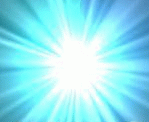 When you think you have discovered a nova
When you think you have discovered a nova
 When you think you have discovered a nova
When you think you have discovered a nova
For this purpose, VSNET takes an open policy of any nova (and supernova, variable star etc.) discovery announcements, i.e. such announcements will be immediately released and made public.
When you think you have discovered a nova, please keep the following in mind before submitting the discovery to VSNET:
0. If you are not familiar with constellations, or no experience with star charts (star maps), and you think you have discovered a naked-eye object (visible to naked eyes), we strongly encourage you to consult your local friend or a local astronomy party or observatory to make an independent confirmation before making a world-wide query.
1. In order to preserve your priority as a discoverer, we recommend you to report your discovery announcement to the CBAT (Central Bureau for Astronomical Telegrams; How to Report a Discovery). We recommend you to add a notice your message to VSNET that this discovery announcement has been reported to the CBAT. These recommendations are not absolute requirements.
2. Before your action, please confirm that your "new object" is not a known star, a known variable star, a known planet, or a known minor planet. Star charts or star mapping programs do not necesarily show all stars correctly. Consult multiple star charts or programs before judging that the object is new. You can check the known variable star at the GCVS home page. SN Candidate Minor Planet Checker is provided by the CBAT.
3. If you have made a discovery of a bright nova candidate (10 mag or brighter) with visual observation or on blue-sensitive photographs. Please first confirm that the object is present (look again the field visually and confirm the presence of a new object) or recorded on multiple photographs. After confirming the point 2., you don't need to hesitate reporting. In this case, you don't need to make a second night observation. It is most important to timely make bright nova/supernova discoveries available to the astronomical commnity. If you don't have a second photograph, or you don't have a chance to look at the field again, please make a report with a remark of a suspected sighting or a single-photograph detection.
4. If you have made a discovery of a nova candidate with CCD observation, you must be more careful before reporting. CCDs have unavoidably "noises" which are sometimes confused with new objects. In most cases, a comparison of different CCD frames will soon reject spurious signals. Taking the field with a slightly different orientation would be useful in avoiding a noise from instrumental origin. In either cases, you need to know the characteristics of your CCDs before making actual discoveries. Red stars are recorded bright on unfiltered CCDs (or CCDs with red-transmission filters). Some extremely red objects have been reported as false alarms. The following links will be useful in identifying red stars/other potential sources of confusion. Note that there are "high proper-motion stars" such as Barnerd's star, which is frequently reported as a new object.
5. Make your discovery report to VSNET. Please clarify the following information.
If you are not a subscriber of the VSNET, please send your report to vsnet-adm@kusastro.kyoto-u.ac.jp (administration). We will forward your message (possibly after some internal checking) to the most relevant lists. Some sender addresses may be rejected by the e-mail gateway spam filter. If there is no response (or you feel your mail does not arrive us), try an e-mail to Hitoshi Yamaoka-san (yamaoka@rc.kyushu-u.ac.jp). Associated images can be also sent to Yamaoka-san, who is a renowned specialist (and proficient huge e-mail handler...) in image examination.
(Follow the links/threads for more information).
 Nova Aql 1999 discovery story (an excellent story of a visual
nova discovery!)
Nova Aql 1999 discovery story (an excellent story of a visual
nova discovery!)
 Short WWW page on discovery of Nova Sgr 2002 number 3
(How one can recognize a nova in a photograph?).
Short WWW page on discovery of Nova Sgr 2002 number 3
(How one can recognize a nova in a photograph?).
 How not to discover novae
(by Fraser Farrell)
How not to discover novae
(by Fraser Farrell)
 Example of successful early report: Nova Oph 1994
Example of successful early report: Nova Oph 1994
 Nova Confirmations
(by Stan Walker)
Nova Confirmations
(by Stan Walker)
 Nova Confirmations
(by Denis Buczynski)
Nova Confirmations
(by Denis Buczynski)
 Missing GSC star confused with a new object
Missing GSC star confused with a new object
 Extremely red object suspected to be a nova
Extremely red object suspected to be a nova
 Known variable star reported to be a nova
Known variable star reported to be a nova
 Return to HomePage
Return to HomePage
 Return to Daisaku Nogami's page
Return to Daisaku Nogami's page
